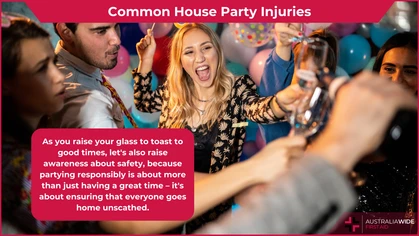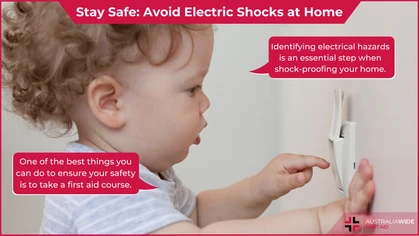Baby Proofing Essentials: What You Need to Know to Get Started Today

Danger
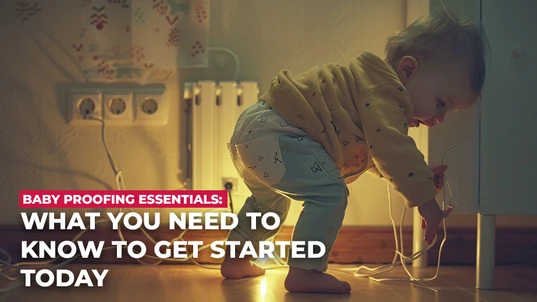
Baby proofing is the act of implementing safety features and removing hazards in your living spaces to maximise the safety of children and babies. Baby proofing is important, as children aged 0-4 have the highest rates of injury death.
Baby proofing is the act of implementing safety features and removing hazards inside your home and other living spaces to maximize safety and minimize opportunities for injury to babies and children. Whether you are expecting a newborn or have already welcomed her into your home, now is a good time to begin baby-proofing your home. According to The Australian Institute of Health and Welfare, children aged 0-4 have the highest rates of injury death, and the rates of injury death among indigenous populations have been as much as five times higher. Boys are more prone to injury death as compared to girls. Though accidental injury and death are unintentional, we can be intentional about the prevention of injury and accidental death through the implementation of safety measures in our homes. Maybe you are feeling overwhelmed about how to address your home’s safety and are not sure where to start. Or maybe you have already started but want to make sure you have addressed all the recommended areas. We are here to guide you and make baby-proofing your home as thorough and stress-free as possible. In the next sections, we will guide you through 4 essential areas to address: furniture and décor, electricity/heat/water, chemical hazards, and alternate living spaces.Furniture and Décor
The best place to start your baby-proofing journey is in the nursery. Your baby will spend a significant amount of time in this room and here she will also begin to explore her independence. Start by securing all large pieces of furniture to the walls using an anchor system or “anti-tip kit”. Babies and children can climb and pull, often long before we expect them to, so we must prepare for the possibility of tipping furniture. Next, move the cot away from the windows. This protects your baby from potentially harmful window coverings and broken glass. Secure or remove any dangling cords. Dangling cords are often found on blinds and window treatments. The best option is to use only cordless window treatments in a home with babies and small children. However, if you are unable to change window treatments you can retrofit your window coverings with products made to contain the dangerous cords. Evaluate the slats on your baby’s cot to ensure they are 50-95 mm apart. The Australian Competition and Consumer Commission provides detailed resources on the safety regulations for baby items, including cots. Their resources can be found here. Unnecessary nursery décor like pictures, baskets, lights, plants, and canopies should be seriously considered. If you decide to keep the décor, ensure that it is not installed above the cot or changing table where it may fall on your baby or lead to suffocation. Toys containing button batteries should be avoided due to the potential for accidental ingestion of batteries by infants and children. If they are to be used, the toys should be regularly assessed for secure closure of battery compartments. Furniture and décor outside the nursery must also be considered. Again, secure large furniture to the wall using anchors or anti-tip systems. Place corner bumpers on items of furniture with sharp edges. Pad or cover any exposed brick or tiled areas with sharp edges. Glass coffee tables should be avoided. Other coffee tables should have corners and edges padded as they are used often by babies as they learn to stand.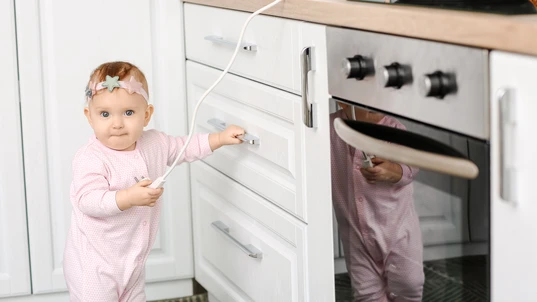
For a baby, common household items look like toys like electrical cords and kitchen drawers.
Electricity/Heat/Water
Install dummy plugs into power points to avoid the insertion of foreign objects and accidental shock. Keep electrical equipment, plugs, and cords away from water sources like bathtubs and sinks. Consider having a licensed electrician do a walk-through in your home to identify potential safety risks. If you have portable heating devices in your home, ensure that they are out of reach of children and are turned off before leaving the house. Keep a fire screen or barrier in front of open flames. Set the maximum temperature on your water heater to 50 degrees Celsius. Severe burns can occur if babies and toddlers accidentally turn up the heat in the bathtub and sink. Immediately empty bathtubs after use.Chemical Hazards
Chemical hazards in the home exist in many forms. These are a few examples: cleaning products, lawn care, paint, and household repair items. The best way to ensure that these items do not end up in the hands of your baby or toddler is to lock them away, preferably in an elevated space. Choose an appropriate drawer or cabinet for indoor products and outdoor products, then install a locking mechanism. There are many products on the market with various locking mechanisms. Choose one that you feel is functional, but not easy to bypass. When moving your products and chemicals into their safe spaces, use that opportunity to inventory your supplies. Throw away expired products, products that you have not used in the last year, and any products you will likely not use in the future.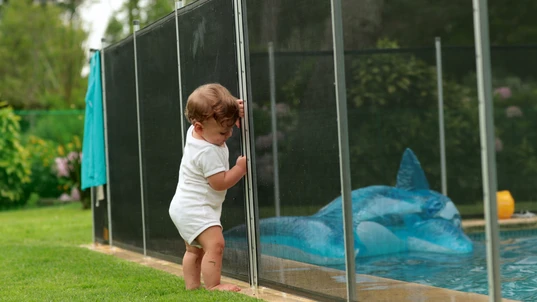
Even with safety mechanisms in place, babies still try to access restricted areas
Alternate Living Spaces
According to The Australian Institute of Health and Welfare, accidental drowning was the second leading cause of accidental death in infants and children between 2015-2017, accounting for 18% of deaths, with children aged 1-4 at the greatest risk. Pools, ponds, and other large sources of water should be fenced off to protect your child from accidental drowning. According to The Government of South Australia, fencing should be at least 1.8 metres high and gates must be self-closing. Spas should not be used by children under 5 and access to them should be restricted using fencing and gates. Lastly, install baby safety gates at the top of any stairs in your home.Other Safety Topics
Do one last check on your hands and knees. Get on your baby’s level. What things catch your eye? Have you missed anything? If accidental injury or casualty occurs, adults and teens with first aid and CPR skills will be better prepared. Consider taking a first aid course or CPR training course to be able to provide appropriate action in the event thifalty occurs. In any emergency, call (000) for ambulance assistance.
Originally published at
https://www.australiawidefirstaid.com.au/resources/baby-proofing-essentials
as part of the Australia Wide First Aid Articles Library



